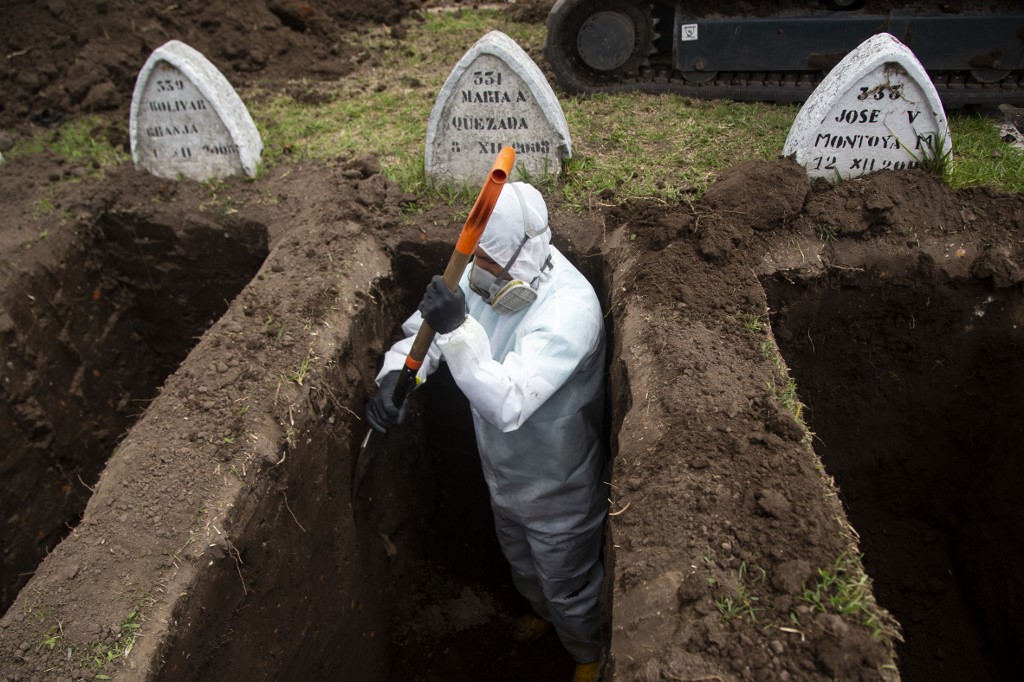(ATF) China is recovering smartly from the slump induced by Covid-19, but there will be no repeat of its single-handed global rescue act following the 2008-09 financial crisis. Indeed, with the pandemic still raging in many countries, the outlook for the world economy remains a lot gloomier than buoyant stock markets would suggest.
Researchers this week reported promising results from early trials of a human vaccine for the coronavirus. But, until the disease is brought under control, consumers in rich countries will be unwilling to shop, go out on the town or travel as readily as before the crisis. That puts economies at risk of a double-dip recession, especially if there is a second wave of Covid-19.
In much of the world, of course, the first wave is still unfurling. More than 260,000 new cases were reported worldwide in a 24-hour period last weekend, a record; India joined the US and Brazil in reaching 1 million cases; and, ominously, the disease is still spreading in America.
Despite the authorities’ failure to get a grip on the pandemic, the US economy is picking up. Retail sales are back close to January levels after a surprisingly buoyant 7.5% rise in June, and manufacturing and services both climbed back into expansionary territory last month, according to the closely watched ISM surveys of purchasing managers.
But Steve Blitz with TS Lombard said he expected retail spending to fade in tandem with consumer confidence, not least because a staggering 32 million Americans are receiving some form of unemployment insurance. Eventually, he said, the country’s “severe underlying recession” will become evident.
“With that, the need for sustained federal income transfers, be they in the form of payments, unemployment insurance or grants to small business, remains acute,” Blitz said.
Fog of uncertainty
Lael Brainard, a Federal Reserve governor, also says fiscal support will remain vital given the severity and the spread of the disease: “A thick fog of uncertainty still surrounds us, and downside risks predominate. The recovery is likely to face headwinds even if the downside risks do not materialise, and a second wave would magnify that challenge.”
The US Congress, which has already allocated nearly $2.5 trillion in coronavirus aid, is haggling over a new package to sustain the economy through November’s election and a feared flare-up in the pandemic in the autumn.
Turning to Europe, retail sales jumped by a record 17.8% in May from April as shoppers welcomed the easing of lockdown restrictions in many countries by rushing to the stores. But the true test of consumer confidence will not come until governments start to phase out the temporary income support programmes they have introduced to mitigate the economic damage of the pandemic.
In the UK, for example, a furlough scheme has protected 9.4 million jobs at 1.1 million businesses since March at a cost to date of nearly 30 billion pounds. But the safety net will be withdrawn by the end of October, raising the spectre of mass unemployment.
The looming blow to consumer confidence can only be imagined. It is already fragile. Many high-street retailers, airlines and restaurant chains have already gone bust or announced extensive layoffs. When England’s pubs were allowed to reopen in the week of July 6, takings were down 40% from the same week a year earlier. Central London is a ghost town.
China, which has generated about 40% of global GDP growth in recent years, is rebounding more strongly than the US or Europe, in large part because it has brought the pandemic under control more quickly. But it is not realistic to expect Beijing to bail out the rest of the world, as it did with its 4 trillion yuan stimulus announced at the height of the financial crisis in 2008.
PBoC strikingly restrained
That credit-fuelled package propelled China’s debt to dangerously high levels, ruling out a repeat performance today. Anxious to contain risks in the financial system, the People’s Bank of China has been strikingly restrained in its easing of monetary policy.
To be sure, the authorities are stimulating the economy, which expanded at a surprisingly strong 3.2% year-on-year rate in the second quarter. Credit growth, directed principally at infrastructure, was 12.8% in June, the fastest clip in 27 months. Excavator sales surged 63% from a year earlier as local governments ramped up spending on public works.
Sales of cars and homes also rose sharply in June, showing that middle-class and wealthy consumers have both sufficient money and enough confidence in the future to spend it, according to Andy Rothman with Matthews Asia.
But restaurant and bar sales were still down 15.2% in June from a year earlier and will take a long time to fully recover, as will other businesses that require customers to gather in confined spaces, he said.
“This is why I expect China’s economic activity to return to about 80% of normal by the end of this year, with the final 20% of the recovery unlikely until after an extended period of time with very few new Covid cases in China, the global pandemic under control, or the development and widespread use of an effective vaccine,” Rothman said.
He is surely correct that a return to normal depends on finding and deploying a vaccine. Usually, the world economy dances to the tune of central banks and fiscal policymakers. For the foreseeable future, it is in the hands of epidemiologists and virologists.
























